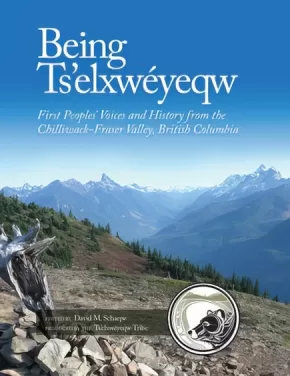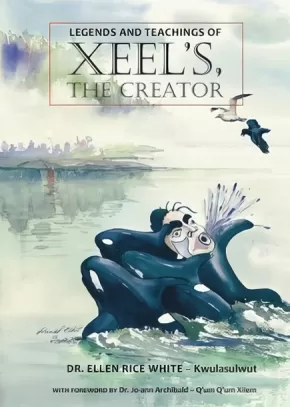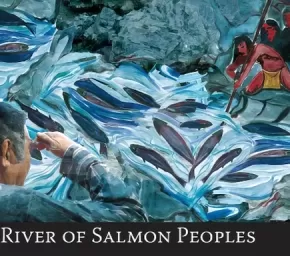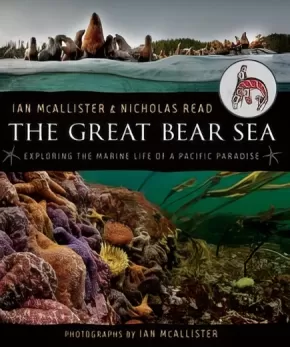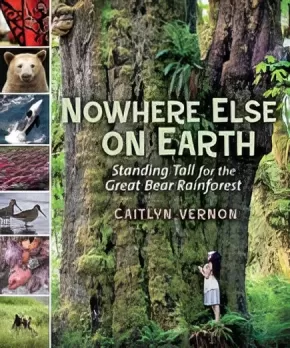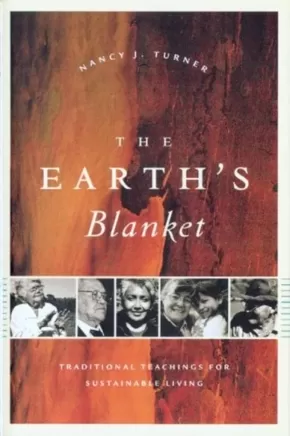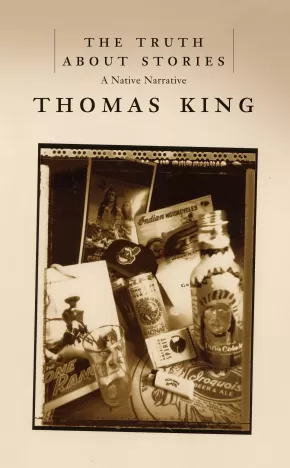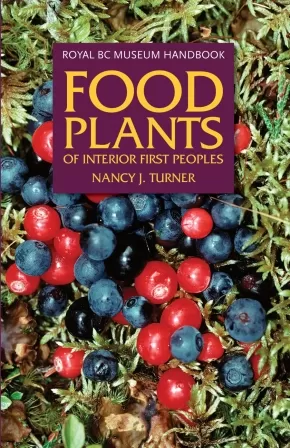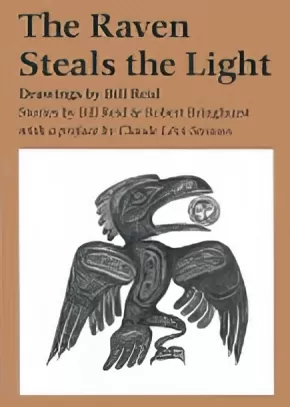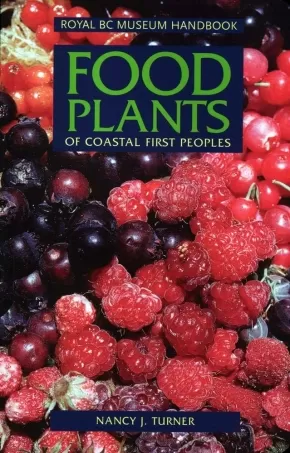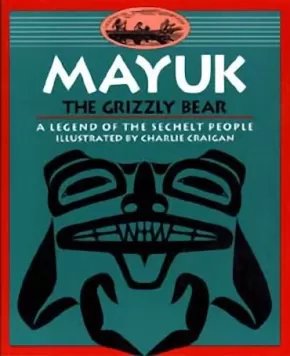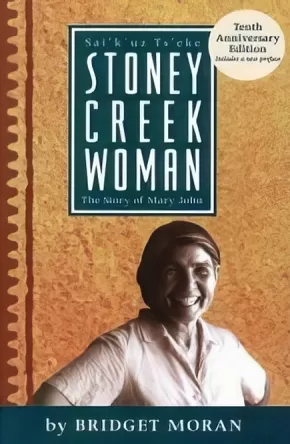
Science First Peoples Secondary - 2019
1
-
15
of
15 Results;
Sort By
Being Ts'elxwéyeqw: First Peoples' Voices and History from the Chilliwack-Fraser Valley, British Columbia
$94.95
Editors:
Format:
Hardcover
Text Content Territories:
Indigenous Canadian; First Nations; Salish; Coast Salish; Sto:lo; Ts'elxweyeqw;
ISBN / Barcode: 9781550178180
Synopsis:
Synopsis:
“Our stories identify for us the land which surrounds us and tie us to our ancestors. We find ourselves inextricably linked to the past, to the land, to the river, to each other, to the future.” —Shirley Hardman, contributor
This impressive volume tells of the First Peoples of the area through vivid narratives from the past and present.
The traditional territory of the Ts’elxwéyeqw First Peoples covers over 95,000 hectares of land in Southwestern BC. It extends throughout the central Fraser Valley, encompassing the entire Chilliwack River Valley (including Chilliwack Lake, Chilliwack River, Cultus Lake and areas, and parts of the Chilliwack municipal areas). In addition to being an area of natural beauty and abundant resources, it also has a rich cultural history. The Chilliwack region gets its name from the Ts’elxwéyeqw tribe, and this volume delves into what this name means—and also what it means to be Ts’elxwéyeqw. Being Ts’elxwéyeqw portrays the people, artifacts and landscapes that are central to the Ts’elxwéyeqw people, and represents a rich oral record of an aboriginal heritage that has been kept alive—even through adversity—for thousands of years.
Lavishly illustrated with over seven hundred historic and current photos and maps, this book amalgamates a variety of voices and personal histories from elders, while providing background into eighty-five place names within the region. The book’s unique composition—with an emphasis on visual storytelling—showcases a culture with a deep connection to the surrounding land and the watershed.
Educator Information
Recommended for Grades 5-12 for the following subject areas: Geography, Social Studies, Science. Also a useful Teacher Resource.
Note: Educators should pre-read sections of this book that they are considering using from this reference book, as reading levels vary greatly.
Additional Information
304 pages | 11.00" x 14.00"
Legends and Teachings of Xeel's, The Creator
$19.95
Format:
Paperback
Text Content Territories:
Indigenous Canadian; First Nations; Salish; Coast Salish; Snuneymuxw ;
ISBN / Barcode: 9781926886558
Synopsis:
Synopsis:
Snuneymuxw Elder and storyteller Ellen White shares four stories handed down to her from her grandparents and their ancestors.
Legends and Teachings of Xeel’s, the Creator contains four short stories centering around themes such as communication, connection, teaching and respect. The stories featured include: “The Creator and the Flea Lady, The Boys Who Became a Killer Whale, The Sockeye That Became a Rainbow, and The Marriage of the Seagull and the Crow.” Each story is accompanied by a companion piece developed by the storyteller Ellen Rice White (Kwulasulwut) which provides cultural context and an explanation of some of the lessons found in each story.
In the story “The Creator and the Flea Lady”, a Flea mother asks for help saving her premature infant. The Flea woman is reminded of her connection to the many energies surrounding her by Xeel’s and the energies themselves.
In “Boys Who Became a Killer Whale”, eager learners frustrated with the pace and demeanour of their traditional teachers reach beyond what they know and encounter tragedy.
In both the “Sockeye That Became a Rainbow” and “The Marriage of the Seagull and the Crow”, respect and acceptance of the differences of others are central components of the stories. The protagonists struggle with their relationships and the differences they have with their partners.
Educator Information
Please Note: These are a set of uncensored, traditional stories. The content is meant to provide traditional teachings.
Each of the four stories in the book is accompanied by a discussion piece that provides cultural context and questions for the reader to consider. Huĺq̓ umín̓ um̓ language is used throughout. A glossary can be found at the back of the book.
Some subject matter may not be suitable for some readers.
Recommended in the Canadian Indigenous Books for Schools 2019-2020 resource list as being useful for grades 9 to 12 for English Language Arts.
Additional Information
112 pages | 6.75" x 9.75"
Orca Chief
$19.95
Format:
Hardcover
Text Content Territories:
Indigenous Canadian; First Nations; Tsimshian (Ts'msysen);
ISBN / Barcode: 9781550176933
Synopsis:
Synopsis:
Thousands of years ago in the village of Kitkatla, four hunters leave home in the spring to harvest seaweed and sockeye. When they arrive at their fishing grounds, exhaustion makes them lazy and they throw their anchor overboard without care for the damage it might do to marine life or the sea floor.
When Orca Chief discovers what the hunters have done, he sends his most powerful orca warriors to bring the men and their boat to his house. The men beg forgiveness for their ignorance and lack of respect, and Orca Chief compassionately sends them out with his pod to show them how to sustainably harvest the ocean’s resources.
Accompanied by almost exclusively new illustrations by Roy Henry Vickers, this next installment of the Northwest Coast Legends will captivate readers young and old with its vivid imagery and remarkable storytelling.
Educator & Series Information
Orca Chief is the third in a series of Northwest Coast legends by Roy Henry Vickers and Robert Budd.
Other books in this series include:
Raven Brings the Light
Cloudwalker
Orca Chief
Peace Dancer
Recommended for ages 3 to 6.
Additional Information
40 pages | 12.00" x 8.25"
River of Salmon Peoples
$32.95
Format:
Paperback
Text Content Territories:
Indigenous Canadian; First Nations;
ISBN / Barcode: 9781926886411
Synopsis:
Synopsis:
An expression of the people, culture, ceremony and songs along the Fraser, River of Salmon Peoples captures what the Fraser River, and its most valuable resource, the salmon, means to First Nations communities along its basin. The result of nine community engagements, extensive research over two years, and illuminating photographs and artwork, this book includes the oral narratives of each community along the river. While capturing timeless Indigenous stories and legends about the salmon and the river, this book is also an exploration of the future of the salmon and waters of the Fraser River.
Authenticity Note: After a team of researchers gathered a wealth of information from and about the indigenous cultures along the Fraser River, Jeannette Armstrong and Gerry William co-edited River of Salmon Peoples.
Ancient Pathways, Ancestral Knowledge: Ethnobotany and Ecological Wisdom of Indigenous Peoples of Northwestern North America
$150.00
Format:
Hardcover
Text Content Territories:
Indigenous American; Indigenous Canadian;
Reading Level: N/A
ISBN / Barcode: 9780773543805
Synopsis:
Synopsis:
How knowledge of plants and environments has been applied and shared over centuries and millennia by Indigenous peoples.
Volume 1: The History and Practice of Indigenous Plant Knowledge
Volume 2: The Place and Meaning of Plants in Indigenous Cultures and Worldviews
Nancy Turner has studied Indigenous peoples' knowledge of plants and environments in northwestern North America for over forty years. In Ancient Pathways, Ancestral Knowledge, she integrates her research into a two-volume ethnobotanical tour-de-force. Drawing on information shared by Indigenous botanical experts and collaborators, the ethnographic and historical record, and from linguistics, palaeobotany, archaeology, phytogeography, and other fields, Turner weaves together a complex understanding of the traditions of use and management of plant resources in this vast region. She follows Indigenous inhabitants over time and through space, showing how they actively participated in their environments, managed and cultivated valued plant resources, and maintained key habitats that supported their dynamic cultures for thousands of years, as well as how knowledge was passed on from generation to generation and from one community to another. To understand the values and perspectives that have guided Indigenous ethnobotanical knowledge and practices, Turner looks beyond the details of individual plant species and their uses to determine the overall patterns and processes of their development, application, and adaptation.
Volume 1 presents a historical overview of ethnobotanical knowledge in the region before and after European contact. The ways in which Indigenous peoples used and interacted with plants - for nutrition, technologies, and medicine - are examined. Drawing connections between similarities across languages, Turner compares the names of over 250 plant species in more than fifty Indigenous languages and dialects to demonstrate the prominence of certain plants in various cultures and the sharing of goods and ideas between peoples. She also examines the effects that introduced species and colonialism had on the region's Indigenous peoples and their ecologies.
Volume 2 provides a sweeping account of how Indigenous organizational systems developed to facilitate the harvesting, use, and cultivation of plants, to establish economic connections across linguistic and cultural borders, and to preserve and manage resources and habitats. Turner describes the worldviews and philosophies that emerged from the interactions between peoples and plants, and how these understandings are expressed through cultures’ stories and narratives. Finally, she explores the ways in which botanical and ecological knowledge can be and are being maintained as living, adaptive systems that promote healthy cultures, environments, and indigenous plant populations.
Ancient Pathways, Ancestral Knowledge both challenges and contributes to existing knowledge of Indigenous peoples' land stewardship while preserving information that might otherwise have been lost. Providing new and captivating insights into the anthropogenic systems of northwestern North America, it will stand as an authoritative reference work and contribute to a fuller understanding of the interactions between cultures and ecological systems.
Educator Information
Table of Contents
Volume One
Figures and Tables ix
Preface and Acknowledgments xv
Note on the Writing System Used in This Book xxxi
1 Introduction to the Book: Ethnobotanical and Ethnoecological Knowledge across Time and Space 3
Part One | History
2 Into the Past: Ancient Relationships among People, Plants, and Environments 43
3 Reflections on Plant Names in Understanding the History of People-Plant Relationships 117
4 Change, Loss, and Adaptation of Plant Traditions 191
Part Two | Development
5 Plants as Food: Development, Diversity, Dissemination 263
6 Plant Use in Technology over Time and Space 335
7 Herbal Medicine and Healing Traditions 415
Appendix 1: Major Sources of Information for the Book 467
Appendix 2: Names of Selected Native Plant Species in Indigenous Languages of Northwestern North America 473
Appendix 3: Names of Two Introduced Plants (Turnip and Potato) in Indigenous Languages of Northwestern North America 507
Notes 515
Volume Two
Figures and Tables ix
Preface xiii
Part Three - Integration and ManaGement
8 Moving for the Harvest: Seasonal Rounds and Plant Knowledge 3
9 Cultural Institutions Related to Ethnobotanical Knowledge and Practice 51
10 Trade and Exchange: Sharing Plant Products and Ethnobotanical Knowledge across Geographical and Cultural Space 101
11 Management and Sustainability of Plant Resources and Habitats 145
Part Four - UnderlyinG Philosophy
12 Narratives in Transmission of Ethnobotanical Knowledge 231
13 Worldview and Belief Systems in Ethnobotanical Knowledge Systems 297
14 Ancient Pathways and New Pathways for Retaining and Renewing Botanical and Environmental Knowledge Systems for the Future 351
Notes 413
References 441
Index of Plant Species 503
General Index 513
Additional Information
1056 pages | 6.00" x 9.00" | Hardcover
The Great Bear Sea
$19.95
Artists:
Format:
Paperback
Text Content Territories:
Indigenous Canadian; First Nations;
ISBN / Barcode: 9781459800199
Synopsis:
Synopsis:
Just below the surface of the Great Bear Sea, a world of mystery exists. Intertidal zones full of colour and exotic-looking life can support thousands of different species of plants and animals.
This new book by Ian McAllister and Nicholas Read explores the intricate relationship between this mysterious underwater ecosystem and the life it supports; mighty great whales, sea lions, dolphins, sea otters, wild salmon, bears, wolves, soaring eagles and so much more.
Saanich Ethnobotany
$29.95
Format:
Paperback
Text Content Territories:
Indigenous Canadian; First Nations; Salish; Coast Salish; Saanich (WSANEC);
ISBN / Barcode: 978-0772665775
Synopsis:
Synopsis:
Nancy Turner and Richard Hebda present the results of many years of working with botanical experts from the Saanich Nation on southern Vancouver Island. Elders Violet Williams, Elsie Claxton, Christopher Paul and Dave Elliott pass on their knowledge of plants and their uses to future generations of Saanich and Coast Salish people, and to anyone interested in native plants. Saanich Ethnobotany includes detailed information about the plants that were traditionally harvested to use in all aspects of Saanich life, such as for food and medicines, and to make tools, buildings and weapons. Each plant is listed by its common (English), scientific and Saanich names. Each listing contains a brief botanical description with a colour photograph, where to find the plant and how it was used traditionally by the Saanich people. This important book celebrates the richness and tremendous value of locally based knowledge in a rapidly changing world.
Authenticity Note: This book has received the Authentic Text label because of its contributions from Elders Violet Williams, Elsie Claxton, Christopher Paul, and Dave Elliott.
Nowhere Else on Earth: Standing Tall for the Great Bear Rainforest (2 in Stock) - ON SALE!
$18.00 $22.95
Format:
Paperback
ISBN / Barcode: 9781554693030
Synopsis:
Synopsis:
You don't have to live in the Great Bear Rainforest to benefit from its existence, but after you read Nowhere Else on Earth you might want to visit this magnificent part of the planet. Environmental activist Caitlyn Vernon guides young readers through a forest of information, sharing her personal stories, her knowledge and her concern for this beautiful place.
Full of breathtaking photographs and suggestions for ways to preserve this unique ecosystem, Nowhere Else on Earth is a timely and inspiring reminder that we need to stand up for our wild places before they are gone.
Visit the website for some great downloadable resources!
http://www.greatbearrainforest.ca/
The Earth's Blanket, Traditional Teachings for Sustainable Living
$24.95
Format:
Paperback
Text Content Territories:
Indigenous Canadian; First Nations;
ISBN / Barcode: 9781553651802
Synopsis:
Synopsis:
Renowned ethnobotanist Nancy Turner brings together decades of experience working with First Nations in the Pacific Northwest. In The Earth's Blanket, she explores the wealth of ecological knowledge and the deep personal connection to the land and its history that is encoded in indigenous stories and lifeways, and asks what they can teach all of us about living in harmony with our surroundings.
Scholarly in its thinking but accessible in its writing, The Earth's Blanket combines first-person research with insightful critiques of Western concepts of environmental management and scientific ecology to propose how systems of traditional ecological knowledge can be recognized and enhanced. It is an important book, a magnum opus with the power to transform our way of thinking about the Earth and our place within it.
Additional Information
176 pages | 6.00" x 9.00"
The Truth About Stories: A Native Narrative
$19.99
Format:
Paperback
Text Content Territories:
Indigenous American; Indigenous Canadian;
ISBN / Barcode: 9780887846960
Synopsis:
Synopsis:
"Stories are wondrous things," award-winning author and scholar Thomas King declares in his 2003 CBC Massey Lectures. "And they are dangerous." In his 2003 Massey lectures, award-winning author and scholar Thomas King looks at the breadth and depth of Native experience and imagination.
Beginning with a traditional Native oral story, King weaves his way through literature and history, religion and politics, popular culture and social protest, gracefully elucidating North America's relationship with its Native peoples.
Native culture has deep ties to storytelling, and yet no other North American culture has been the subject of more erroneous stories. The Indian of fact, as King says, bears little resemblance to the literary Indian, the dying Indian, the construct so powerfully and often destructively projected by White North America. With keen perception and wit, King illustrates that stories are the key to, and only hope for, human understanding. He compels us to listen well.
Reviews
"Trust a novelist and English professor to get to the heart of how stories and storytelling shape our perceptions. This is a wonderful study of the power of words." — Booklist
"A collection of thought-provoking essays examining the importance of the oral tradition. Storyteller Thomas King addresses Native cultural concerns and their primal link to storytelling. Intriguing and entertaining. Highly recommended for all tribal college collections and literature classes."— Tribal College Journal
"What is revealed in this graceful, even seductive book of essays about storytelling by the esteemed Cherokee novelist, radio personality, university professor, and Canadian émigré is that what is as important as the stories we tell about the world are the ways in which we interpret those stories." — World Literature in Review
"King’s addresses artfully combine literary and cultural criticism, traditional Native American stories, and personal experience." — The Bloomsbury Review
Educator Information
Essay series that is a study of First Peoples' storytelling in North America.
Grades 10-12 English First Peoples Resource for various units.
Curriculum Connections: English, Indigenous Studies, Civics and Careers, History, Humanities and Social Sciences.
Additional Information
208 pages | 5.08" x 8.00"
Food Plants Of Interior First Peoples
$26.95
Format:
Paperback
Text Content Territories:
Indigenous Canadian; First Nations;
Reading Level: N/A
ISBN / Barcode: 9780772658463
Synopsis:
Synopsis:
Nancy Turner describes more than 150 plants traditionally harvested and eaten by First Peoples east of the Coast Mountains in British Columbia and northern Washington. Each description includes information on where to find the plant and a discussion on traditional methods of harvesting and preparation.
Educator Information
B.C. Science Supplementary Resouce Gr.7- Life Science
Additional Information
224 pages | 5.50" x 8.50"
The Raven Steals the Light
$18.95
Artists:
Format:
Paperback
Text Content Territories:
Indigenous Canadian; First Nations; Haida;
ISBN / Barcode: 9781550544817
Synopsis:
Synopsis:
Ten masterful, complex drawings by Bill Reid are accompanied by ten episodes from Haida mythology told by Bill Reid and Robert Bringhurst. The result brings Haida art and mythology alive as never before in an English-speaking world. The collection includes, says Reid, "a good selection of bestiality, adultery, violence, thievery and assault, for those who like that sort of thing."
Educator Information
This work is available in French: Corbeau vole la lumiere
Additional Information
112 pages | 6.13" x 8.44"
Food Plants Of Coastal First Peoples
$26.95
Format:
Paperback
Text Content Territories:
Indigenous Canadian; First Nations;
Reading Level: N/A
ISBN / Barcode: 9780772656278
Synopsis:
Synopsis:
In Food Plants of Coastal First Peoples, renowned ethnobotanist Nancy J. Turner describes more than 100 plants traditionally harvested and eaten by coastal aboriginal groups. Each description contains botanical details and a color photograph to help identify the plant, information on where to find it, and a discussion on traditional methods of harvesting and preparation.
This popular book remains an essential guide for anyone interested in wild edible plants or traditional cultures of First Peoples living on the coast of British Columbia and adjacent areas in Alaska and Washington.
Educator Information
B.C. Science Supplementary Resouce Gr.7- Life Science.
This interesting and informative book contains descriptions and photographs of more than 100 edible plants. There is information to help the reader identify the plants, and also how the Coastal First Peoples used it.
Additional Information
|
Mayuk the Grizzly Bear
$12.95
Artists:
Format:
Paperback
Text Content Territories:
Indigenous Canadian; First Nations; Salish; Coast Salish; Shishalh (Sechelt);
ISBN / Barcode: 9780889711563
Synopsis:
Synopsis:
These traditional teaching legends come straight from the oral traditions of the Sechelt Nation. Simple enough to be understood by young children, yet compelling enough for adults, they are gentle, beautifully presented cautionary tales. You'll want to read them again and again - and you'll learn a few words of the Shishalh language while you're at it.
Reviews
"In the naming of his great-grandson, a grandfather relates the story of how Mayuk met his match at the hands of three brothers, and how one, who was wounded, was healed by Indian medicine. To celebrate his survival, the grandfather named his grandson Mayuk so he would have the attributes of that animal. That this book is a story within a story within a story within a story is a common Northwest Coast oral history device." - Oyate
Series Information
This book is part of the Legends of the Sechelt Nation series.
Additional Information
40 pages | 7.00" x 8.50"
Stoney Creek Woman
$21.95
Format:
Paperback
Text Content Territories:
Indigenous Canadian; First Nations; Dene; Dakelh (Carrier);
ISBN / Barcode: 9781551520476
Synopsis:
Synopsis:
The captivating story of Mary John (who passed away in 2004), a pioneering Carrier Native whose life on the Stoney Creek reserve in central BC is a capsule history of First Nations life from a unique woman's perspective.
A mother of twelve, Mary endured much tragedy and heartbreak the pangs of racism, poverty, and the deaths of six children but lived her life with extraordinary grace and courage. Years after her death, she continues to be a positive role model for Aboriginals across Canada. In 1997 she received the Order of Canada. This edition of Stoney Creek Woman, one of Arsenal's all-time bestsellers, includes a new preface by author Bridget Moran, and new photographs.
Shortlisted for the Roderick Haig-Brown Regional Prize
Now in its 14th printing.
Sort By

